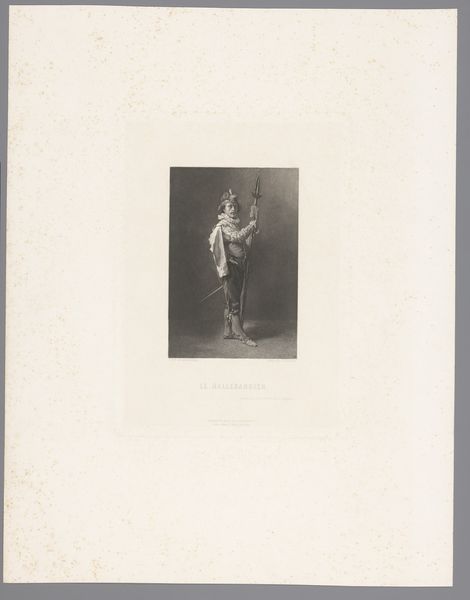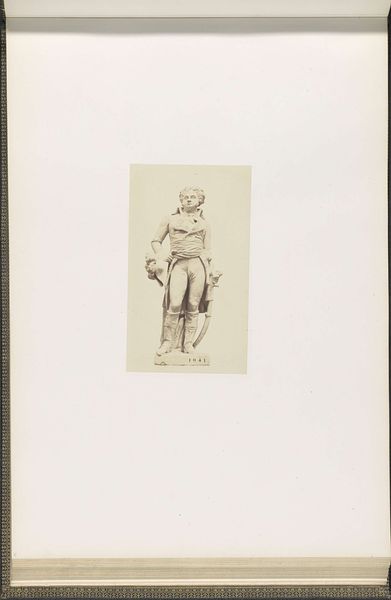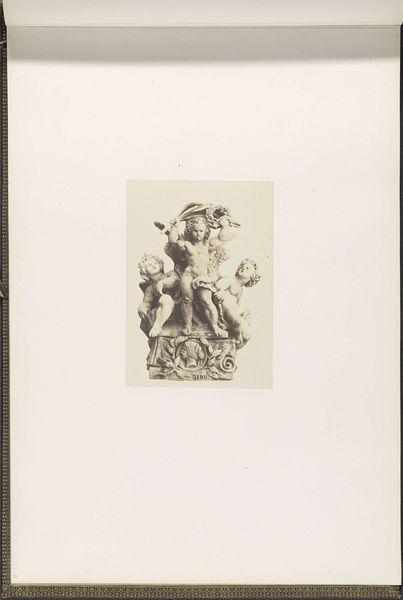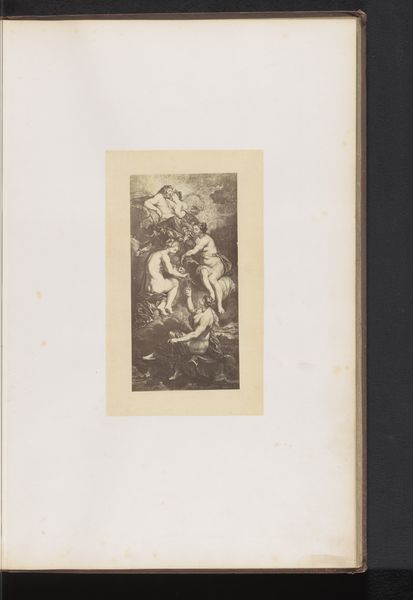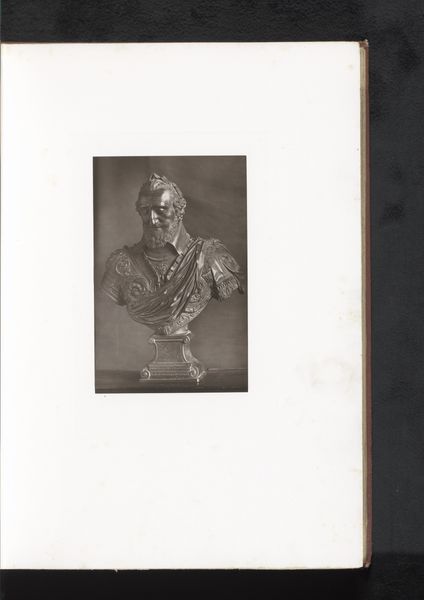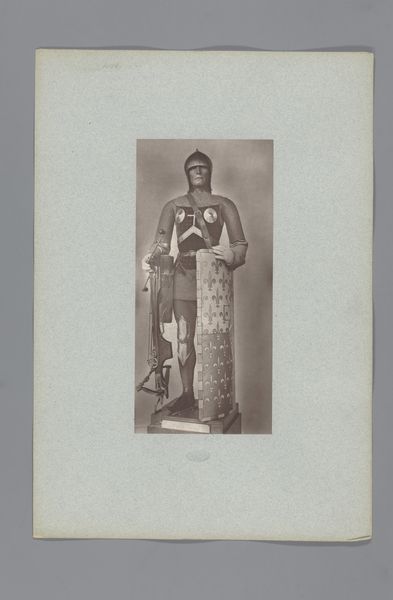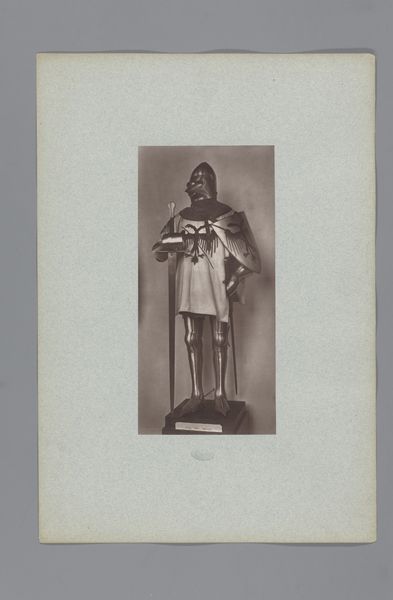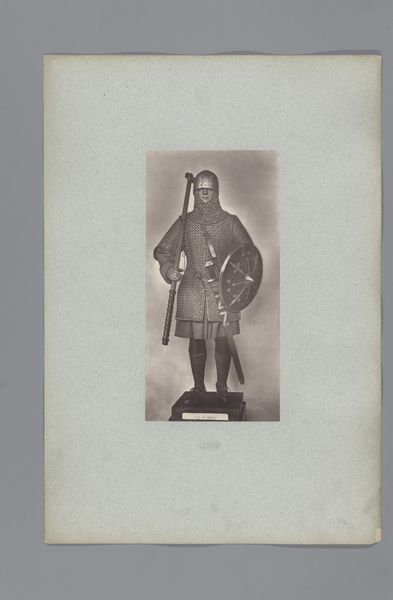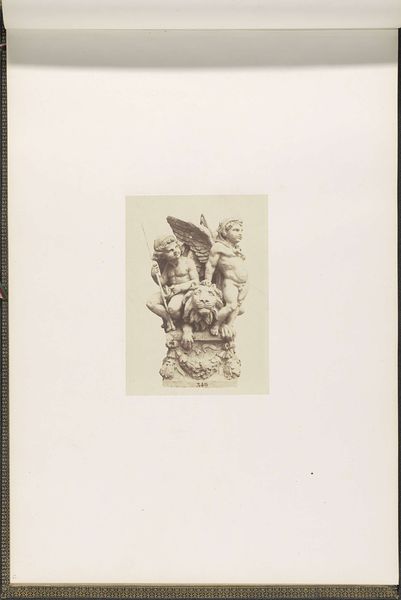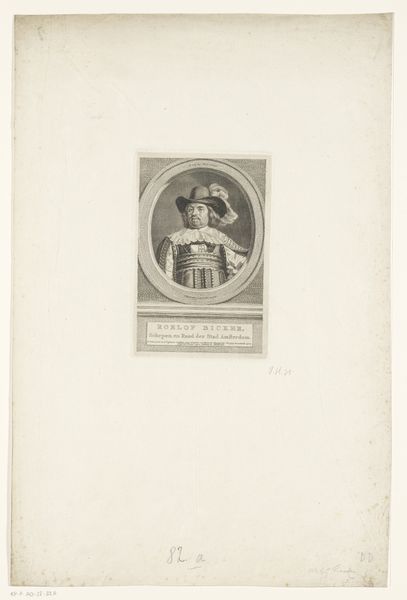
Gipsmodel voor beeldhouwwerk op het Palais du Louvre: "Hoche" door Eugène Farochon c. 1855 - 1857
0:00
0:00
drawing, pencil
#
portrait
#
drawing
#
neoclacissism
#
pencil
#
academic-art
Dimensions: height 376 mm, width 523 mm
Copyright: Rijks Museum: Open Domain
This is a photograph by Edouard Baldus, showing the plaster model made by Eugène Farochon for a sculpture at the Louvre Palace. While Baldus is best known for his architectural photography, here he captures an artwork that itself represents an earlier stage in a making process: a plaster model for a stone sculpture. Plaster is easy to work, and relatively cheap. As such, it has long been used as a proxy for more expensive materials, like marble or bronze. Consider that the tactility of the sculpture has been mediated twice – first translated by Farochon into plaster, then by Baldus into a photographic print. In both cases, the hand of the artist, and the physical labor involved, has been somewhat concealed. Farochon’s sculpture was intended for the Palais du Louvre, itself a symbol of French power and prestige. Baldus’s photograph flattens the tactility of the plaster. Both artists contributed to the aura of power, in different ways. Paying attention to the materials and processes through which the photograph, and the sculpture it depicts, came into being, gives us insight into the artistic and social values that they embody.
Comments
No comments
Be the first to comment and join the conversation on the ultimate creative platform.

